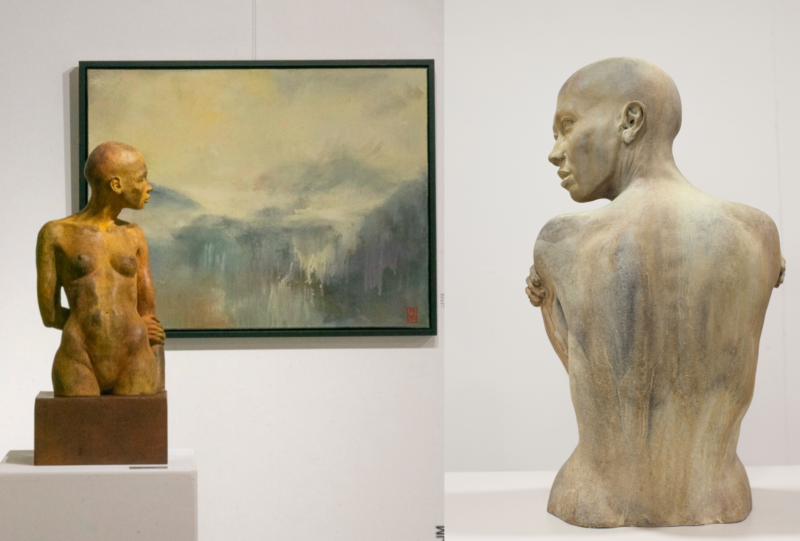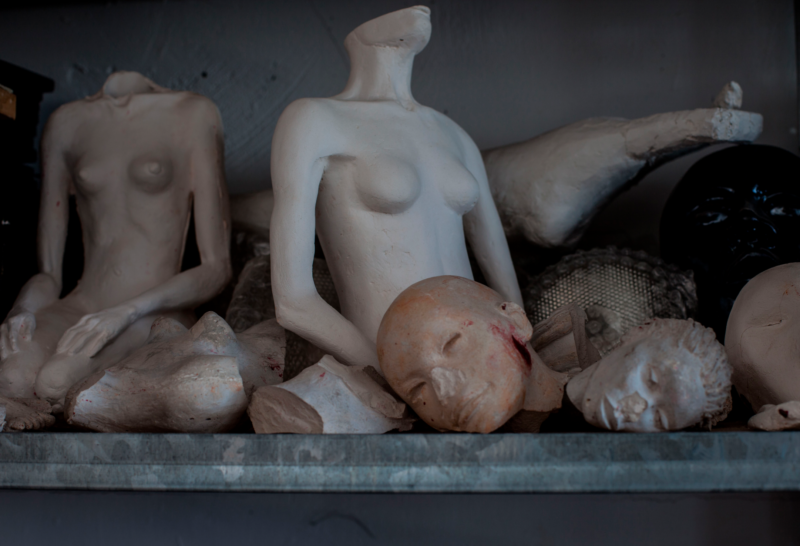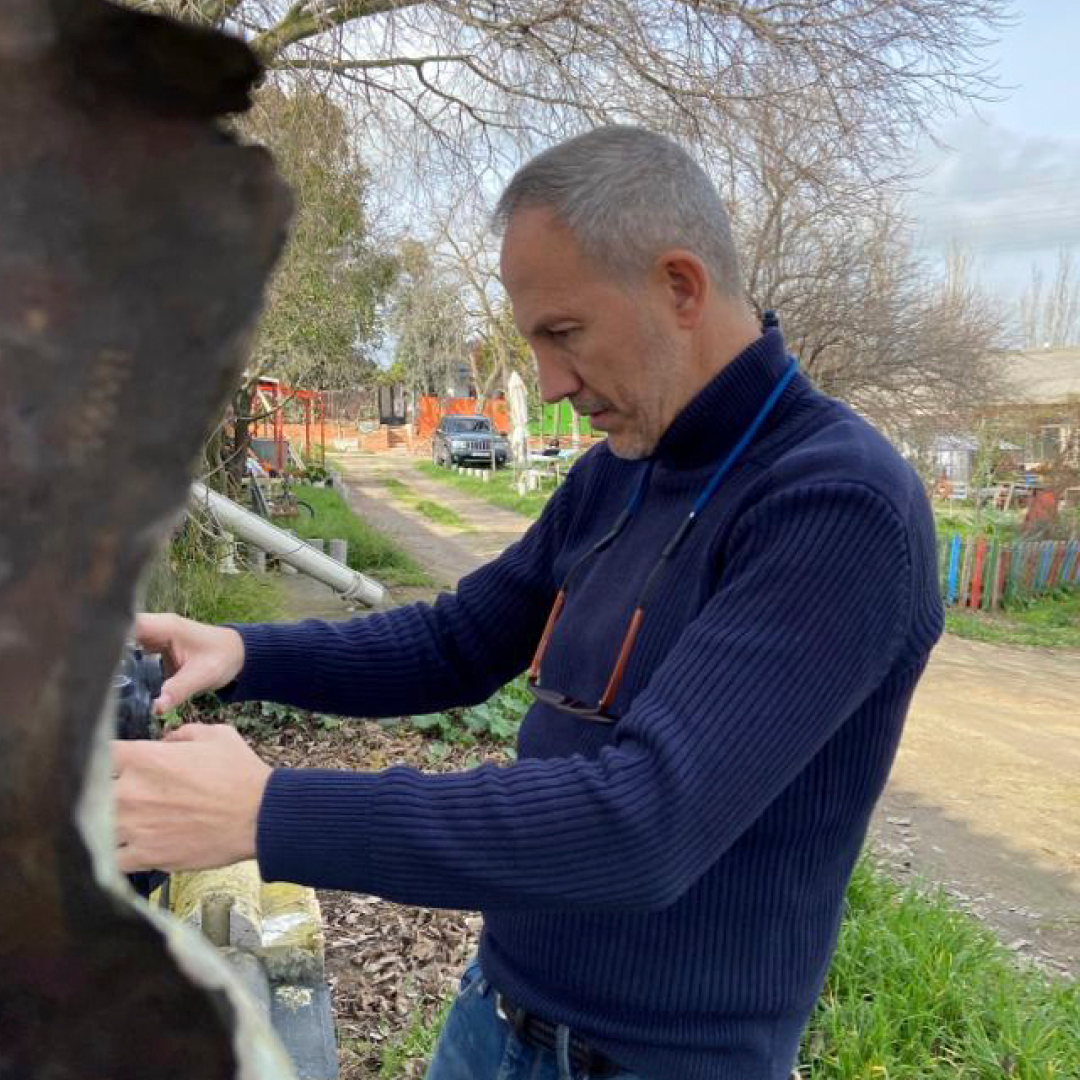Ivan Larra is a Spanish sculptor whose internationally recognized work explores the corporeality of the human being and the morphology of the world.
In an interview for Fine Art Shippers, artist Verita Amare Et spoke with him about the irresistible desire to create, fascination with all kinds of things, and the subtlety of human emotional states.
Artist Talk: Ivan Larra on Sculpture as a Way of Feeling
How did you start in art, what was the initial impulse? Why do you have an irresistible desire to create something?
Ivan Larra: The interest in creation, generally, arises very early and does not leave you for the rest of your life. I remember the moment when, as a teenager, I got my hands on the catalog of a painter who presented a very spontaneous and chromatic work of expressionist style in a gallery in Madrid. His work fascinated me. I remember in an almost dreamlike way the emotion, the restlessness that it generated in me. The desire to take action shook me as if it were a shock.
At the age of eighteen, I was powerfully attracted to drawing and comics, then I became interested in illustration and airbrushing. From there, I moved on to painting, engraving, photography, and finally to sculpture, where I have settled for about ten years. The reason why I feel the need to create images or objects—I don't really know where it lies. I only know that it is a vital impulse that I have and that I need it as a way to navigate and endure the world.
Where have you lived? What do you like about those places and why? Where would you like to live and work ideally?
I was born in Madrid and that's where I currently live. I spent a few years of my life in the Canary Islands and also lived a couple of years in Bilbao. But I would like to live and work in a coastal city, somewhere warm and sunny. Cadiz, Nice, California, Florida... I think they are good places to live.
What inspires you?
In 1992, while visiting the Universal Exposition in Seville, upon entering a pavilion that brought together several African states belonging to what was once French West Africa, I suddenly experienced a Stendhal syndrome. The reason: the presence of a black woman. As a result of that aesthetic experience—her beauty was so unbearable—I immediately withdrew my gaze, and with my eyes on the floor, hurriedly left the pavilion. The sensation at the moment I encountered her image was that of an electrocution. The rest of the day was disturbed.
That same year, I undertook an initiatory journey through Burkina Faso, Ghana, and Ivory Coast. In a childish, futile, and mystical way, I hoped that fate would show her to me again.
The corporeality as a reflection of attitudes and moods or the recreation of classical myths from a contemporary point of view are the common motifs of my work. I seek to show the communion between the reality manifested through the forms and that which is sublimated from the soul, the emotional nature of the individual expressed through action, posture, and the gestures of the body.
The evocation of the classical is also present in many of my works. The idea of ruin, through broken material, oxidation, and the patinas of metal, serves as a testament to the passage of time and the finitude of things, but paradoxically, it also conveys an idea of survival, of resistance to the passage of time, and therefore of eternity.

Bronze, stoneware, and sometimes wood or iron—traditional yet noble materials—are the primary mediums for most of my work. For as long as I can remember, I've possessed a potent internal drive, a magnetic pull towards images, figures, shapes, and the morphology of objects. This attraction often evolved into a keen interest and, in some instances, a deep fascination.
On some occasions, I would fixate this affection on a few things, as if they were "fetishes." I would become interested in a particular type of plant, the Barbie my sister played with, a diesel locomotive, an extinct animal, the figure of an indigenous person, the camouflage of a military airplane, an abandoned building, or the image of a woman... It happens like this with all sorts of elements. It's simply a fascination with images that has always accompanied me, in the same way that a dog can't help but sniff everything that gives off a scent. I have lived and continue living by and for images.
This attraction has led me to attempt to capture, through representation, the moment, the fragile and fleeting instant in which images live just before they inexorably disappear in a world in constant motion.
But it's not just this; I also believe in the language hidden inside artifacts, in their deep truth, which in some works springs spontaneously and becomes visible to everyone who contemplates them, and in others, it hides, becomes elusive, only to be seen from a certain angle, with a certain light, or manifesting itself to only some of the people observing them.
This journey in pursuit of images has been long, intense, and fruitful, but at the same time, it has been vague, slow, exhausting, and challenging. I have gone through different stages: painting, graphic work, drawing, and photography, which have provided experiences, encounters, ways to delve deeper into the apprehension of forms, and different paths that have ultimately led me to figurative sculpture, at the moment when two dimensions proved to be insufficient.
What thoughts do you have while working on a new sculpture? Can you express them all through the language of art?
Working on a piece is a very intense process, it takes a considerable amount of time, and throughout that period, there is a continuous tension between what is pursued and what is obtained. There is an element of conscious mastery and subjugation of the material, but there is also chance and learning, all of which make the thoughts that come into play during creation very varied, intense, and complex.
Yes, I believe that art has the extraordinary capacity to allow the expression of all emotions and perhaps also all thoughts, but no, I do not believe that a single artist can express them all, at least not me. 
Would you like to complement your art with words? What would you like the viewers and collectors to know about your reasoning and thoughts on art?
My work interprets the world and its inhabitants through what is essential and common to all human beings and their cultures: the body we live in. It could be said that it does not feature obvious beauty, but rather appeals to something transcultural, mixed, and exotic, to a beauty of the body that resides in its gestures, where we usually do not look for it. These are figures that, through their bodily posture, generate emotional and sensitive atmospheres, establishing connections with the observer. Gestures convey fragility, pride, power, vulnerability, seduction, or loneliness, communicating through that visual code we all share and recognize. With each piece I create, I try to speak of the Universality of the Human Being, starting from the concrete, from the singularity of the particular body of the model, whether real or imagined.
Why did you choose sculpture as your main medium? What other types of art do you use, and why?
I have approached painting, engraving, and photography, but in none of these disciplines have I had the sensation of my own personal territory that I experience with sculpture.
What do viewers and collectors usually say about the philosophy of your works, or are they concentrated on objects of the beautiful-ugly, like-dislike type?
The viewers and collectors of my works mainly value and appreciate the sensitive experience that the pieces communicate to them. Typically, there is no ideological discourse or concept being conveyed to them, but rather an emotional landscape that is sensed, felt in a simple and immediate way.
How do you feel when you look at your work?
Generally satisfied, with the feeling of having managed to approach that which I wanted to express and turn into material.
Your works mainly contain images of people, why?
The representation of who we are based on our corporeality has been a constant in all cultures since the very birth of humanity. The body, our body, matters to us, and even though it has been represented millions and millions of times, today, in the 21st century, it still interests us and continues to attract us powerfully. Therefore, my work is rooted in what is most important to me: the human being.

One of your sculptural compositions features three women made from three different materials. What does it express and what feelings and thoughts do you think it evokes for the viewer?
The composition featuring sculptures of the same woman in three different materials: clay, wax, and bronze, is a game to show the process of creating a bronze sculpture. First, I start with an original that I model in clay, then I make a casting of that model in wax, and finally, it is cast in bronze using the "lost wax" technique. Besides, this work is an evocative image that metaphorically refers to the notion of individuality, the diversity that always exists, despite apparent equality and similarity.
Which of your sculptures do you like best and why?
I can't say that one work has pleased me more than another in terms of its execution. With every one of them, I have had moments of enthusiasm, illusion, and enjoyment of the work, as well as moments of frustration and discouragement. Creation has a lot to do with confrontation with oneself. Each work is a project and has its lights and shadows related to the difficulty, greater or lesser, in carrying it out. I can say that I have lived intensely through the creation of all of them.
Can you tell me about your recent exhibition, where sculptures and paintings were placed in a dialogue with each other?
This is a beautiful combination of painting and sculpture that happened in the latest solo exhibition I held at a gallery in southern France. In this project, the paintings of a French artist and my sculptures shared the gallery space. The gallery owner conducted an extraordinary curation by pairing painting and sculpture pieces, achieving a very special poetic atmosphere. We discovered how the expressive power of painting related in a "magical" way to my sculptures.
What kind of images do you envision creating in the future? What thoughts would you like to express through them?
I will continue to explore the female figure and its emotional and symbolic universe, but I also have in mind to soon address the male body. In any case, rather than thoughts, they will express emotional states.
What plans do you have for your work and personal life?
My next goal is to go beyond Europe and start working with an art gallery in North America. Another project I would like to undertake is the creation of large-scale public sculptures. I believe and advocate for the contribution of sculpture to the shaping of public space and the generation of meaningful elements in both urban and natural environments.

Interview by Verita Amare Et
Photo courtesy of Ivan Larra
